Hot Topics in Engineering
| Power Pitch Session: How it Works | |
|
1st Hour: 2-minute Power Pitches inside the Power Pitch Theater. 2nd Hour: 60-minute Digital Poster Presentations at the numbered plasma screens outside the Power Pitch Theater. |
1st Hour
Pitch: Hot Topics in EngineeringPower Pitch
Engineering
Tuesday, 14 May 2019
Power Pitch Theater A - Exhibition Hall
15:45 - 16:45
Moderators: Natalia Gudino, Andrew Webb
2nd Hour
Poster: Hot Topics in EngineeringPower Pitch Poster
Engineering
Tuesday, 14 May 2019
Power Pitch Theater A - Exhibition Hall
16:45 - 17:45
| Plasma # | |||
 |
0560. 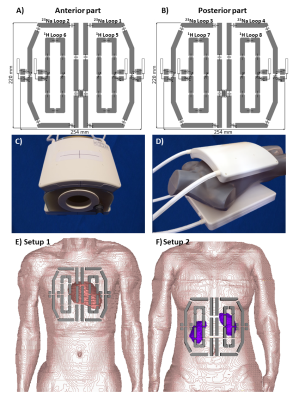 |
1 | Cardiorenal Sodium MRI at 7.0 Tesla Using an 8-Channel 1H/23Na RF Coil Array
Laura Boehmert, Andre Kuehne, Helmar Waiczies, Daniel Wenz, Thomas Eigentler, Armin Nagel, Thoralf Niendorf
Cardiorenal syndrome (CRS) describes disorders of the heart and the kidneys in which a dysfunction of one of the organs induces a dysfunction in the other. Sodium MRI at ultrahigh magnetic fields offers an appealing strategy to gain a better functional and metabolic understanding of CRS and detect these diseases earlier. This work describes the design, construction and application of an 8-channel 1H/23Na RF coil tailored for cardiorenal imaging at 7.0 Tesla.
|
 |
0561. 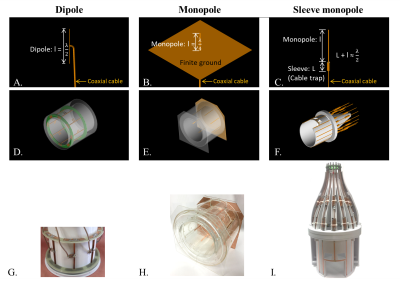 |
2 | Evaluation of a sleeve monopole antenna array, a novel 16-channel radiative antenna array at 10.5T
Myung Kyun Woo, Lance DelaBarre, Jingu Lee, Russell Lagore, Steve Jungst, Kamil Ugurbil, Gregor Adriany
We designed an elliptical 16-channel transceiver sleeve monopole array for human head imaging at 10.5T and evaluated the performance both in simulation and experiment. The 16-channel sleeve monopole array was compared to 8-channel end-loaded dipole and monopole arrays. Porcine brain images acquired with the sleeve monopole array demonstrate good coverage and performance.
|
0562. 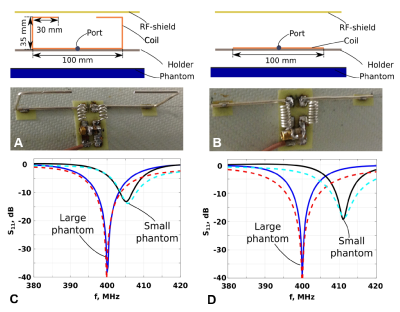 |
3 | Evaluation of Short Folded Dipole Antennas as Receive Elements of Ultra-High Field (UHF) Human Head Array.
Nikolai Avdievich, Georgiy Solomakha, Loreen Ruhm, Klaus Scheffler, Anke Henning
Increasing the number of surface loops in a human head receive (Rx)-array improves the peripheral SNR, while the central SNR doesn’t substantially change. Recent work demonstrated that optimal central SNR at UHF requires a contribution of two current patterns associated with a combination of loops and dipoles. A novel array consisting of 8 transceiver surface loops and 8 optimized folded Rx-dipoles was developed and tested. Addition of Rx-dipoles doesn’t substantially alter B1+ field and the maximum local SAR. At the same time the new design improves both central and peripheral SNR as compared to the similar 16-element array with Rx-only vertical loops.
|
|
0563. 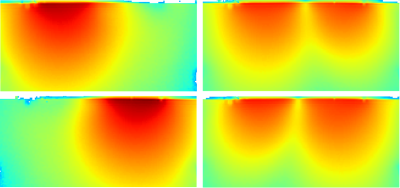 |
4 | Preamp decoupling improves SNR and the earth is flat
Christian Findeklee, Oliver Lips, Peter Vernickel, Christoph Leussler, Randy Duensing
Preamplifier decoupling has been used to isolate elements of receive array coils for decades. For good SNR, decoupling of elements is essential. However, recent research results claim that this just holds for “real” electromagnetic decoupling rather than preamp decoupling as long as the SNR-optimal channel combination is used. We performed experiments on the impact of preamplifier decoupling including also accelerated imaging using SensE. We found no significant difference in SNR between preamplifier decoupled and resonant coil elements.
|
|
 |
0564. 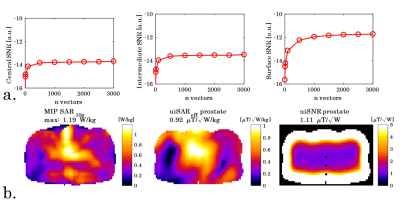 |
5 | Approaching the ultimate intrinsic coil performance for 7T body imaging with high-density parallel transmit/receive arrays
Bart Steensma, Ingmar Voogt, Thijs Kraaij, Peter Luijten, Martijn Cloos, Daniel Sodickson, Dennis Klomp, Cornelis van den Berg, Alexander Raaijmakers
In order to calculate
|
 |
0565. 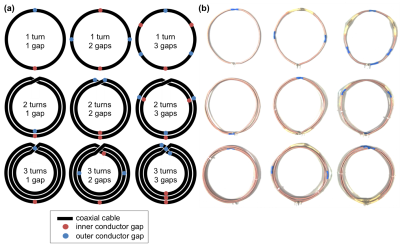 |
6 | Flexible multi-turn multi-gap coaxial RF coils (MTMG-CCs): design concept and bench validation
Lena Nohava, Raphaela Czerny, Michael Obermann, Michael Pichler, Roberta Frass-Kriegl, Jacques Felblinger, Jean-Christophe Ginefri, Elmar Laistler
The design of flexible coaxial coils (CCs) based on the single-turn single-gap concept is extended by multiple turns and multiple gaps (MTMG-CCs) to achieve a larger range of coil diameters for a given resonance frequency. An equivalent circuit for MTMG-CCs is presented and the resonance condition is solved numerically for coils with diameters up to 20 cm, 1-3 turns, and 1-3 gaps. For validation of the calculations, 27 coils with 6/9/12 cm diameters, 1-3 turns, and 1-3 gaps were built and characterized on the bench.
|
 |
0566. 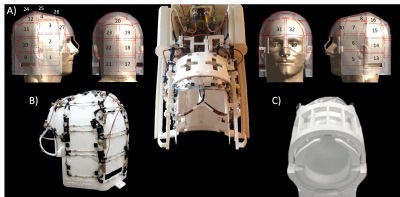 |
7 | An 8Tx dipoles/32Rx loop coil array – Evaluation of fMRI performances in auditory cortices at 7T
Jérémie Clément, Sandra Da Costa, Rolf Gruetter, Özlem Ipek
The performances of a 32-channel receive coil array combined with a tight-fitted whole-brain dipole coil array were investigated. Functional MRI data targeting the auditory cortices was acquired. Noise correlation matrices, SNR and g-factor maps were measured. Compared to a commercial 32Rx, the in-house built 8T/32Rx coil array demonstrated higher robustness in the fMRI results. Lower noise correlation coefficients were measured with the in-house built 8Tx/32Rx coil array while the overall experimentally measured SNR and g-factor maps were comparable.
|
0567. 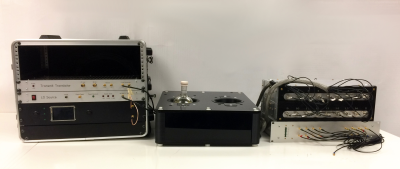 |
8 | A System for 16-Channel 13C Magnetic Resonance Spectroscopy Data Acquisition at 7T
Stephen Ogier, Matthew Wilcox, Sergey Cheshkov, Ivan Dimitrov, Craig Malloy, Mary McDougall, Steven Wright
A system has been developed to enable the acqusition of 16-channel 13C data on a Philips Achieva 7T scanner. Radiofrequency mixers are used to convert the transmitted signal to 13C, and the received signal back to 1H to be acquired by the host system's receiver. A 16-element unilateral breast coil has been developed, and data have been acquired that show a substantial SNR improvement from use of the array.
|
|
 |
0568. 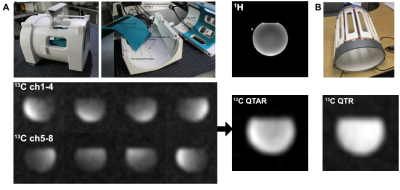 |
9 | Development of 1H/13C RF Head Coil for Hyperpolarized 13C Imaging of Human Brain
Junjie Ma, Ralph Hashoian, Chenhao Sun, Steve Wright, Alexander Ivanishev, Robert Lenkinski, Craig Malloy, Albert Chen, Jae Mo Park
A customized 1H/13C RF head coil that consists of a 1H quadrature transmit (Tx) and receive (Rx) coil and 13C quadrature transmit and array receive (QTAR) coils was developed. The performance of the new head coil was evaluated using phantoms and compared to the existing 13C-only quadrature Tx/Rx (QTR) head coil. Metabolic imaging of human brain was performed using the 1H/13C head coil, following an injection of hyperpolarized [1-13C]pyruvate.
|
0569. 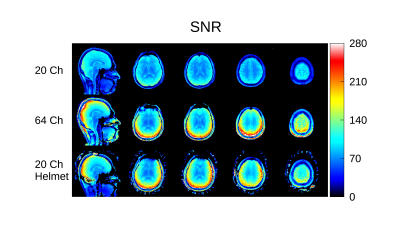 |
10 | Towards whole-cortex enhancement with a uHDC Helmet at 3T
Christopher Sica, Sebastian Rupprecht, Ryan Hou, Matthew Lanagan, Navid Gandji, Michael Lanagan, Qing Yang
We performed a human brain imaging study using a prototype conformal helmet constructed with ultrahigh dielectric constant (uHDC) materials inserted into a standard 20-Ch head coil at 3T. We characterized the transmit and receive performance of the helmet by comparing to results using the 20-Ch and 64-Ch head coil (n=5 subjects) without the uHDC helmet. The SNR and its spatial distribution within the cerebrum using the 20-Ch Coil with uHDC Helmet is comparable to that of the 64-Ch Coil. Further improvement of the uHDC helmet insert is expected to significantly improve the performance of standard receive arrays for brain imaging.
|
|
0570. 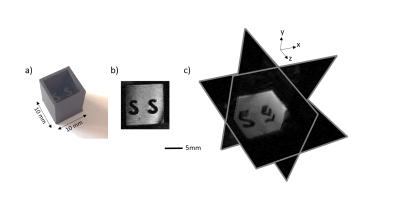 |
11 | Performance of a novel cryogen-free cryostat with an automated temperature control for fine tuning of High Temperature Superconducting RF coils: high-resolution MR imaging at 1.5 T
Isabelle Saniour, Gilles Authelet, Bertrand Baudouy, Rose-Marie Dubuisson, Laurène Jourdain, Georges Willoquet, Luc Darrasse, Jean-Christophe Ginefri, Marie Poirier-Quinot
We present the performance of an MR-compatible cryogenic system dedicated to cool High Temperature Superconducting (HTS) radiofrequency coils for micro-MRI at 1.5 T. A real time control and regulation of the temperature were performed to finely tune the HTS coil to the Larmor resonance frequency with a precision of 1 Hz. Firstly, we demonstrated that this cryostat does not cause any electromagnetic disturbance. Secondly, MR images of a 1 mm-cubic liquid phantom were acquired using the HTS coil as a transceiver with a spatial resolution down to (100 μm)3 under real clinical research experimental conditions.
|
|
0571 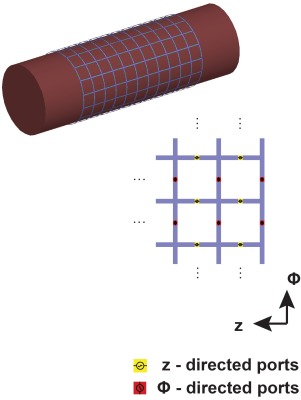 |
12 | Fast and Intuitive RF-Coil Optimization Pipeline Using a Mesh-Structure Video Permission Withheld
Jan Paska, Jose Raya, Marijn Cloos
At the last years ISMRM we proposed an RF coil optimization pipeline based on a mesh structure consisting of 50-Ohm sources and copper patches. This allowed us to compute the maximal possible SNR of a given mesh as well as the emulation of concrete coil geometries in post-processing.
In this work we present an analysis of body imaging at 7T with an appropriately chosen mesh size that can reach the UISNR. Furthermore the optimal current weights are analyzed to create a physically realizable coil that approaches the UISNR. |
|
0572. 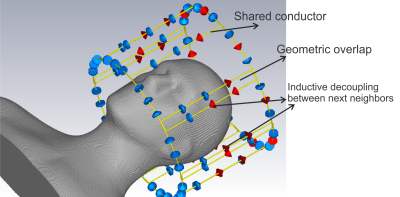 |
13 | An 8-channel transmit 32-channel receive 7T head coil for 1Tx and pTx scanner modes
Shajan Gunamony, Paul McElhinney, Sarah Allwood-Spiers, Gavin Paterson, Jozien Goense
In this work, a nested array of 8-transmit elements was developed and combined with a 32-channel receive array for imaging the human brain at 7T. This setup can be used in the single channel and parallel transmit mode of the Siemens 7T scanner. The transmit array was designed to make the setup less claustrophobic and provide an open feel, benefitting fMRI and patient studies. The transmit performance of this setup is presented here.
|
|
0573. 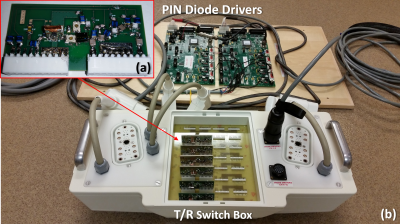 |
14 | Fast transmit/receive switch for SWIFT imaging at 7T
Russell Lagore, Edward Auerbach, Naoharu Kobayashi, Steve Jungst, Steen Moeller, Greg Metzger, Kamil Ugurbil, Michael Garwood, Gregor Adriany
Sweep imaging with Fourier transformation (SWIFT) can image extremely short-lived MRI signals such as cortical bone and lung. However, it requires fast transmit/receive (T/R) switching during the gapped RF excitation, which cannot be handled with standard clinical MRI hardware. A fast transmit/receive switch (switching time ≤ 400 ns) is developed for integration into an 8-channel in-bore T/R switch interface. These T/R switches are driven via repurposed Varian PIN drivers which are, in turn, triggered via an optical-to-TTL signal. This hardware enabled the acquisition of SWIFT images of the human head at 7T with an 8-channel transmit/receive degenerate birdcage coil.
|
|
0574. 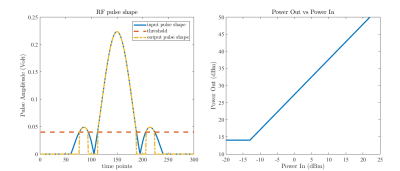 |
15 | Out-phasing Modulated Current-Mode Class D (CMCD) Amplifier with Improved Dynamic Range
Sherry Huang, Michael Twieg, Mark Griswold
Developments in RF transmit systems have been trending towards increasing independent elements and compact designs. Previous work has shown the capability of enhancement mode Gallium Nitride (eGaN) FETs in high-efficiency switchmode RF amplifier (RFPA) based on envelope elimination and restoration (EER). Switchmode RF amplifiers, however, suffer from nonlinearity and limited dynamic range, leading to errors in excitation profiles. Here we present preliminary results on a new prototype which adds an additional modulation methods using digital controls to increase RFPA dynamic range.
|
 Back to Program-at-a-Glance |
Back to Program-at-a-Glance |  Back to Top
Back to Top